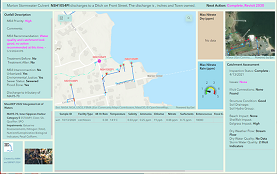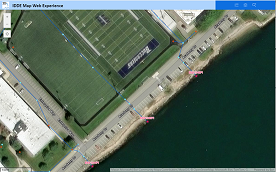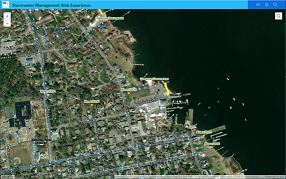
Buzzards Bay Stormwater Collaborative: Data & Documents
Try one of our interactive maps:
|
 Water Quality Dashboard Water Quality Dashboard Guide A dashboard to evaluate outfalls and view water quality sampling data. |
 IDDE Map A simple map to view structures during field work. |
 Sampling Dashboard A dashboard to use during sampling. This dashboard only works on smart phones. |
Documents available for download from Buzzards Bay Stormwater Collaborative
Details of the water quality monitoring program, and a detailed description of the methodologies used can be found in the Stormwater Collaborative's 2023 Quality Assurance Program Plan (QAPP). Our monitoring guidelines are at this link: Monitoring-Guidelines-Rev7-08-15-23final.pdf
In July 2018, the Buzzards Bay NEP issued a report, Lessons learned in the implementation of the Buzzards Bay Stormwater Collaborative effort to map and monitor stormwater discharges [updated in 2019], describing successes and challenges faced during implementation of the project.
Updated original Water Quality Data ReportsIn the fall of 2023, the NEP updated the discharge reports for each of the eight stormwater collaborative municipalities. Below are the latest reports. These reports included stormwater quality data, dry weather inspection information, maps based on collected stormwater infrastructure GIS data, identification of possible illicit connections, and recommended priorities for municipal action to manage these stormwater discharges. Check the interactive map to see if there is more recent information for a particular site.
Mattapoisett-Outfall-Reports.pdf
An explanation of the information found in this report can be found in this Online catchment report explanation.
ArcGIS datafiles
September 2024 Geodatabase: Stormwater-Atlas-Version-4.zip.
Data and Information from Other Sources
Buzzards Bay NEP sponsored study: How Land Use Affects Water Quality Characteristics of Stormwater: A Study of Tub Mill Brook [Mattapoisett, MA]. A Thesis in Civil and Environmental Engineering by Tyler Nunes Jacob Submitted in Partial Fulfillment of the Requirements for the Degree of Master of Science
